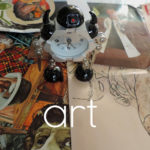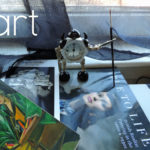
James 6/By Grace of God King of Scotland
Was it a cold morning in Edinburgh in 1586 when James VI, only twenty years old, very aware of his status as a divinely-appointed monarch, but with already a lifetime’s experience of human nature and earthly politics, sat in front of Adrian Vanson to be painted? Was he nervous? His watchful eyes suggest not, but his position, though finally secure, probably didn’t feel very stable; just three years earlier he had been imprisoned by those ruling in his name, and this year, although he signed a treaty of mutual defence with England against the possibility of a Catholic invasion, his mother who he had succeeded, remained in England, alive and imprisoned. Was Vanson nervous? Or was it just another job? The King wasn’t always noted for his good temper, but the artist, who had come to Scotland from the Netherlands via London (where he had an uncle) already knew James, and had first painted some pictures for the young King in 1581, before his imprisonment and, in happier circumstances, the year before this portrait, had painted a more glamorous and light-hearted portrait of the King to be taken abroad and shown to prospective suitors. But this picture, sombre, stern even, is about power; James 6th by the grace of God King of Scotland. When we look at this painting, at this sulky looking young man, we are making some kind of connection, looking through the eyes, albeit via the hand, of a Dutch man who died around 420 years ago. The painting – even if by the standards by which art is usually judged, it’s ‘not great’ – has a personal value, one human being, recorded by another, as well as a cultural one. It tells us something about fashions, lifestyles, the way a king could be depicted in that country, in that period (for all his divinity he is not an iconic figure), class structures, religion – but what is it “worth”? What is any work of art worth?

Leaving aside metaphorical, metaphysical or aphoristic answers, or going into a much more long winded but possibly worthwhile conversation about what art is (I’m going to say it’s a deliberate act of creation, but even that is arguable), let’s assume we know what art is. Googling ‘art definition’ initially brings up five presumably definitive and certainly iconic pictures, the Mona Lisa, The Starry Night (both as famous as their creators, pretty much), Les Demoiselles d’Avignon (whose creator – Picasso – is more famous than the painting), The (or rather Leonardo’s) Last Supper and A Sunday Afternoon on the Island of La Grand Jatte, which I think is probably more famous as an image than a title, and the image is more famous than its creator Seurat.
What are these paintings worth? I’m sure facts and figures are available, but this is not – despite the age of some of the paintings, about intrinsic worth; I imagine there is a basic going rate for an early 16th century Italian renaissance portrait on panel (and so forth), but that has little to do at this point with the price of the Mona Lisa. The painting would be just as good (or just as whatever you think it is) if the artist was unknown, but the value has – and always has had – a lot to do with Leonardo da Vinci and the perception of him as more than just someone who painted good portraits.
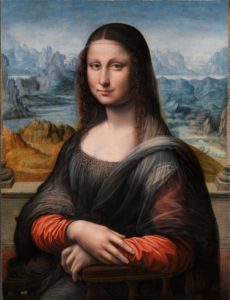
Separating the art from the artist is always a difficult and controversial subject, but should really be easier in the visual arts that almost any other field. Yes, artists have their own ‘voice’ or visual language, but that is not the same as reading their actual words, or hearing their actual voice; and yet – because, I guess, of market forces, artists are routinely known and valued above and beyond their works and those works – even their doodles and fragments – are valued accordingly. A scrawled caricature in a margin by Leonardo (or Picasso) can be “worth” many times what a highly finished, technically brilliant oil painting by an unknown artist is. This disconnect happens because although art history is human history, “the art world” as it has existed since at least the 19th century is more like horse racing – take away the money and what you have is a far smaller number of people who are genuinely interested in how fast a horse can run.
Which is fine – but the question of what a painting (for instance) is “worth” has become the way art is engaged with popularly; somehow art, unlike sport, has never earned its own daily segment on the news and really it only appears there when the sums it raises are enormous (Leonardo’s Salvator Mundi), the sums lost are enormous (theft, fires, vandalism), or it’s part of a story that’s interesting in itself (Nazi art hoards, previously undiscovered ‘masterpieces’ etc). But the veneration of artists above art – now at the very peculiar stage at which a painting “after” (that is, not by, and possibly not even from the same era as) a famous ‘old master’ can be worth a far higher sum than a genuine painting by a lesser known ‘old master’ – masks the true value of art, which may be cultural, but is ultimately always personal.
Even without any knowledge of the King James or his life, we are able, if we can see – just by being human – to make certain assumptions about the kind of person he was, and what he may have been thinking or feeling on that day in 1586. This kind of empathy is an act of the imagination; if we are mind-reading it is ultimately our own mind we are reading – but no more so than when we meet eyes with a stranger on the street or on a train. And if looking at Vanson’s King James is – because we can find out these facts – a connection with both an immigrant living in what must have in many ways been an unfamiliar country, and with a young man who had recently attained some kind of power, not only over his own life, but over a country, at the cost of his mother, then what of a painting like the Mona Lisa? It is, regardless of how compromised it has become by fame, monetary value and endless theorising, a link with the mind and ideas – and hand – of Leonardo and a kind of communication with the sitter herself. She was probably Lisa Gioconda, she may have already been dead, but although I stand by all of the above, what I seem to have suggested is that a painting is a kind of code to be broken or a museum to be explored and unpacked. These things enrich our understanding of or connection with a painting, but they don’t make it. What makes art so fascinating – but also why it doesn’t have five minutes on the news every night – is because it’s so individual. It’s (VERY) possible to not care in the slightest about the outcome of, say a rugby or football match, but the final score is the final score, regardless of how anyone feels about the quality of the game or the skill of the players. It would not be satisfactory somehow to have a football match where no points were awarded and the outcome of the game depended on how you feel about it. But in art it is completely respectable – and I don’t think wrong – to say, (To paraphrase the great surrealist painter Leonora Carrington); if you really want to know what the Mona Lisa’s smile means, think about how it makes you feel.
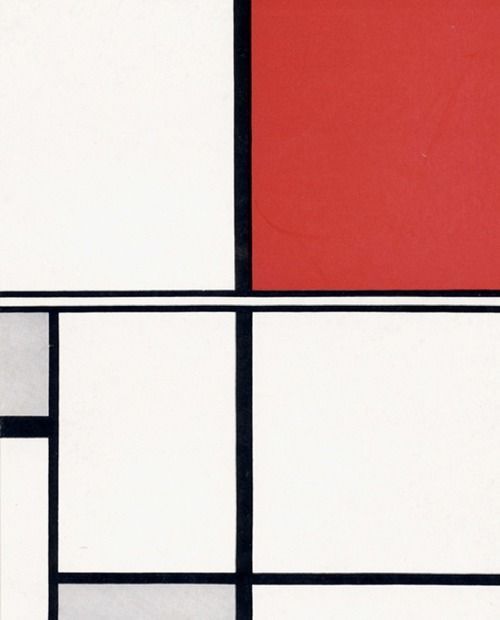
This might seem like reducing art to the level of ‘human interest’, but what else is there? The choice of figurative paintings with a possible narrative element is a matter of taste and makes the human element unavoidable. But if we feel intense emotion when looking at a Mark Rothko painting, a sense of peace and calm from a Mondrian, Marlow Moss or Hans Arp picture, or exhilaration in front of a Peter Lanyon work, the fact remains that ‘we feel’ (or ‘we don’t feel’) is the common denominator. Viewers through the ages who have detected echoes of divine order and harmony in the works of Piero Della Francesa or Fra Angelico have only definitely detected them with any certainty within their own perceptions, which is not to say that they aren’t feeling something the artist himself felt. There’s a philosophical, ‘tree falling in the woods’ point here; is Van Gogh’s ‘Sunflowers’ a work of emotional and artistic intensity after the gallery lights go out? Or is it more like a kind of magic spell or booby trap, triggered only when a spectator is there to observe it?
That said, figurative art, especially portraiture, is – however many layers of information are contained in it – relatively easy to ‘understand’ on a basic level; ie if we can see, we can see what it is. It is the understanding and appreciation that remains entirely individual and subjective. Conceptual art – shockingly still around in much the same forms as it has been since the 60s – is, despite its apparently interpretation-inviting name, less transparent. This means that, unlike something we instantly recognise, it’s – initially at least – only as powerful as its visual impact. And in fact, whereas familiarity invites interpretation in traditional art, it tends to – on a popular level at least – repel it in conceptual art. The controversy surrounding classic media frenzy conceptual pieces like Carl Andre’s pile of bricks, or Tracy Emin’s unmade bed is because everyone knows exactly what a pile of bricks, or a sleeping bag or a bed is, and they don’t feel the need or desire to think further about it and if they do they feel – no doubt wrongly – that they are putting more thought into it than the artist did.
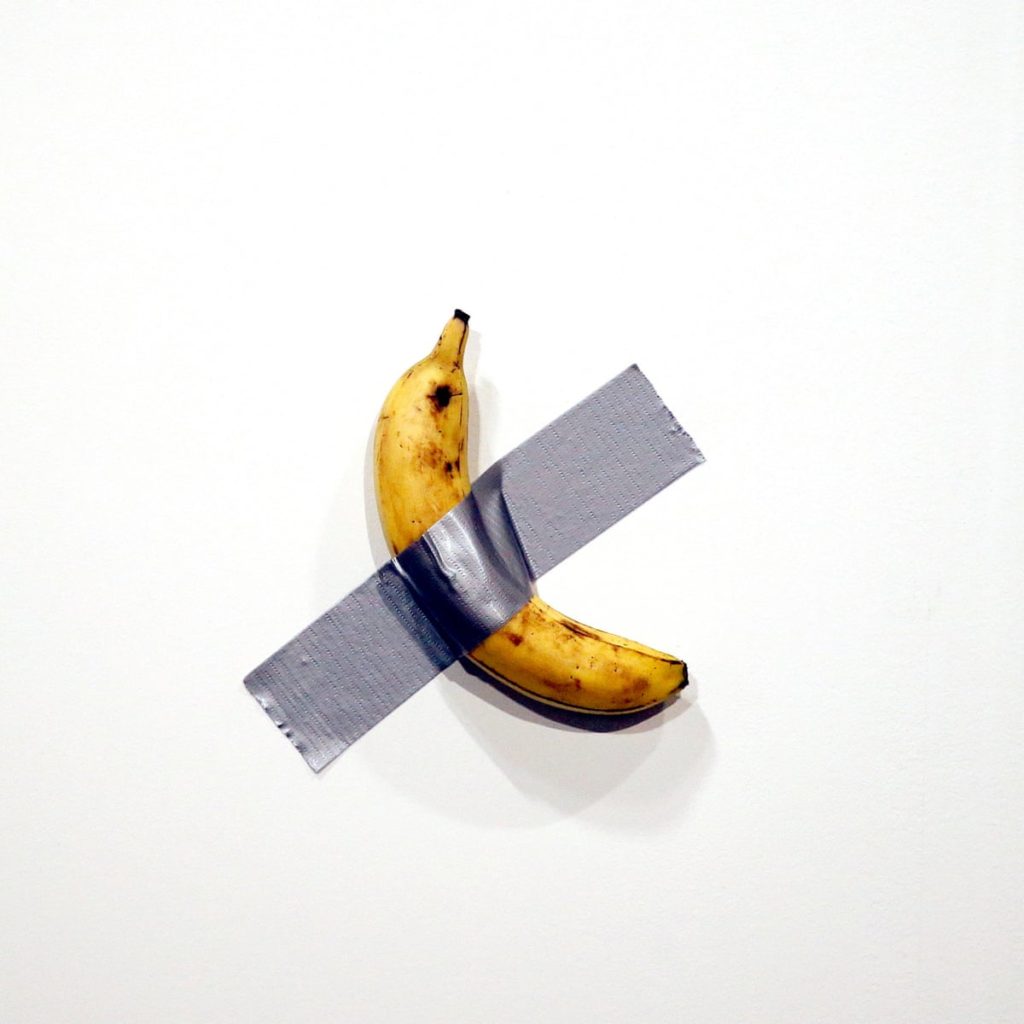

That is the ‘philistine’ response and it’s easy to have sympathy with; personally, I don’t mind wondering what a conceptual work means, but if I get no kind of emotional or cerebral response from looking at it in the first place then I’d rather the artist had just written their ideas down. This is me and my deficiency though – if Maurizio Cattelan put his heart and soul into taping that banana to the wall – or even if he just enjoyed doing it – who am I or anyone else to devalue that? And if whoever paid that much money for it is getting some similar experience, or just the satisfaction of being the owner of the most expensive banana in the world – then that’s hard to argue with too.
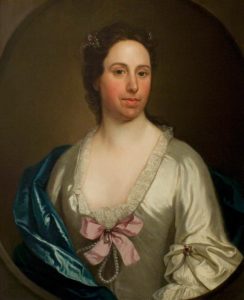
I don’t think it devalues art – quite the opposite – to think of it as a form of communication between individuals, even if as mentioned above, it is really communication with the one person you will ever know with any certainty – yourself. What I seem to be saying (which I may not entirely agree with) is that art is a mirror. Take this beautiful painting from around 1725 by an unknown artist of an unknown lady. To me, this is a real connection with this unknowable person – but again, only as unknowable as any face that passes you in the street never to be seen again – she was a real person, sitting in a room, around 300 years ago, probably wearing something she liked or that told the world how she wanted to be seen, being painted by someone – and by 1725 it could have been a man or a woman – with whom they may have been engaging, impatient, chatty… We can only guess and extrapolate from the picture. That extrapolation will be different every time depending on the viewer and their own knowledge, not just of history, but of people and experience. If 7.6 billion people look at the picture it becomes in essence 7.6 billion pictures, 7.6 billion mirrors.
That is not to say that the picture is ‘better’ than Cattelan’s banana. If I came across the banana taped to a wall anywhere except an art fair would I see it as art? In a way yes, in the sense that it is literally artificial – not the fruit itself, but its location would clearly be a deliberate, human act and not – as a nail in a wall might be – something that could feasibly have a purely utilitarian meaning. It would be puzzling – far more so in fact that in an art fair where the (surely expected by the artist) first reaction of most non-art world people would surely be the eye-rolling ‘so this is ‘art’ is it?’ Whether it would be intriguing, or thought-provoking seems less likely, except insofar as provoking thoughts like ‘who put that banana there and why?’ Which I guess is perfectly valid – and in its own way a genuine connection of the viewer and artists’ minds, though not something that would probably take up much brain space after the initial wondering. But then, many – even most, people (whether or not they would approve of it as art vs the banana) might just as well look at the woman in her fine dress 300 years ago, or the young King James, and pass on without even wondering anything at all.





